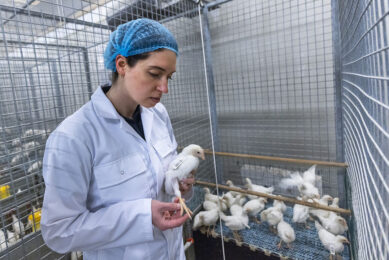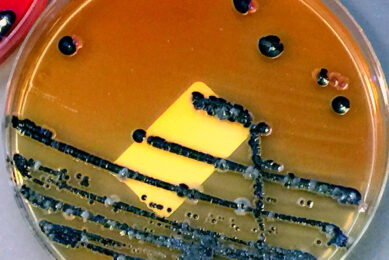New non-chlorine option for poultry processing
Some relief for US poultry processors that wish to export their product to Russia: the newest antimicrobial solutions from SteriFx Inc. are an answer to the Russian ban on chlorine-rinsed poultry.
Its FreshFx line of antimicrobial solutions are all non-chlorine based, and have been in use for On-Line Reprocessing (OLR) and finishing chillers, as well as for applications throughout evisceration and secondary processing. In addition, SteriFx has added another product to replace chlorine in chillers and evisceration waters – ProtectFx.
Peracetic acid
ProtectFx is a peracetic acid (PAA) product that has an oxidizing chemistry, which can replace chlorine in poultry processing and provide excellent pathogen control.
According to a 2008 Auburn University study, PAA was more effective than chlorine in decreasing Salmonella and Campylobacter in poultry carcasses, and the PAA-treated birds showed an extended shelf-life as well.
“Our FreshFx solutions for on-line reprocessing (OLR) have always been chlorine free”, says John Dankert, CEO of SteriFx. “Our peracetic acid product was developed to help plants that could not use chlorine due to municipal water treatments that used ammonia, for OLR and salvage. This was in place when the Russians made their recent demands.”
De-chlorinate water
SteriFx can also de-chlorinate incoming water to the plant using chemical treatments as opposed to costly filter units. In most municipal water systems, even that level of chlorine is too high to pass Russian regulations. The US contends that chlorinated water is quite safe.
In addition, ProtectFx is an effective strategy for poultry processors if ammonia and/or chloramines are present, if chlorine is a problem due to gassing off or other safety issues, or if an intervention in chillers and finishing chillers is needed.
Government approved
SteriFx antimicrobial products for OLR have been approved by the USDA, EPA and FDA. They contain non-toxic, low pH, aqueous solutions that have been proven to rapidly control pathogens, are easy to use, and adapted for industrial and consumer applications.
While acidic, when used as directed, they are non-toxic to skin and eyes and safe for ingestion and inhalation.
Join 31,000+ subscribers
Subscribe to our newsletter to stay updated about all the need-to-know content in the poultry sector, three times a week. Beheer
Beheer








 WP Admin
WP Admin  Bewerk bericht
Bewerk bericht